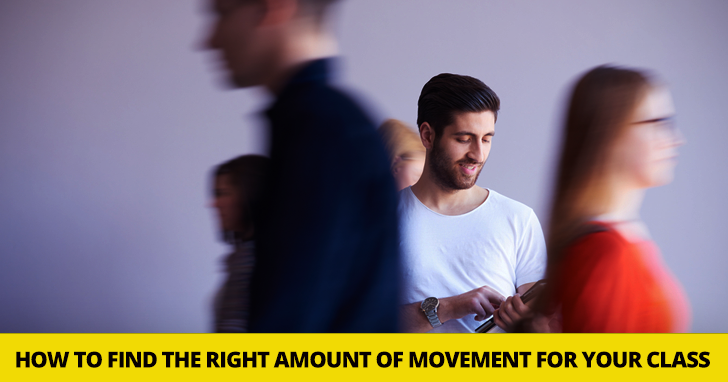Get Up And Get Moving: 5 Tips For Finding The Right Amount Of Movement For Your ESL Class


If you have, your aren't the only one. Sadly , lack of space in the classroom is a common issue and one that is hard to manage specially when we all know how important it is for kids to move while learning. Movement is vital in the learning process, and not just because kids are typically active. Children learn through movement. They learn by doing. This happens because movement integrates and anchors new information into our brain. In order to anchor a thought an action must be used. For instance, to better remember something, many people write it down on a piece of paper and put that paper up on the fridge door or stick it to their computer. The physical movements we use to write and put up a note, internalize and solidify the content in nerve networks. That's why many people tend to think better and more freely while performing a physical task. Many even claim that they think best when they are taking a walk, or while doing chores around the house. It's no surprise why it's so important to include activities with movement, specially since we all know how important TPR is in ESL.
So, we've established why moving is so important. Now we have to deal with the issue of space, or lack of space to be more specific. Though having a large and spacious classroom would be ideal, the truth is lack of space doesn't need to be an issue because there are ways to work around this.
Many teachers think that activities that include movement require a great deal of space. Though there are activities that do, most of them really don't. The key is always organization and control. Let's start with simple movements that require virtually no classroom space precisely because they take place with each student in their place. Take a look at these simple movements and simple examples on how to use them.
Activity: The kids will naturally be sitting down so to practice verbs in the past give each student a card with a verb in past tense. Then write a verb in it's infinitive form on the board. Ask the students to look at their card and identify if they have the past form of that verb. If they do, the should stand up. Do this quickly so children pay attention.
Activity: Put two posters that contain illustrations of different objects they are familiar with on the board. They could contain images of vocabulary words you have practiced with them. On top of each poster lable Right and on the other Left. Then read the name of those objects to the kids and ask them to raise their right arm or left arm depending on whether that object is on the poster labeled Right or Left.
Activity: This could be used to ask and answer questions. Give each student a flash card with the image of a man or woman on it. Students can take turns asking about the person in the other students' picture: Is he a man? Is he/she blond? Has he/she got blue eyes? Etc.
Activity: Divide the classroom in groups of four or five students. For each group, give one of the students a word to start a sentence and ask him/her to add a word to it. That student then passes it to the student next to him/her, and they add a word and so on. The group that finished the sentence first wins.
Now let's take a look at movements that require the use of the available classroom space.
If you have a special activity in mind, and it seriously requires space you don't have, ask if you can use another place in the school or institute where you teach. Places like, the gym, playground and even the lunchroom are amazing and can be used if and when you are allowed to. A teacher who offered private instruction to kids in their homes often organized activities with the kids outdoors. Needless to mention they needed to be accompanied by their parents but in my opinion , it was a great way handle the situation.